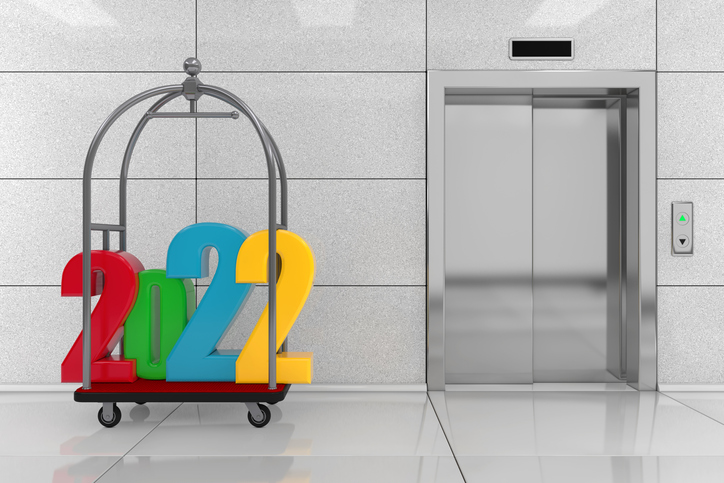
By Larry and Adam Mogelonsky
The zeitgeist of February/March 2022 has deemed the upcoming spring and summer to be named ‘Revenge Travel 2.0’ because it will resemble the past two summer surges in erratic volume increases but also likely be substantially larger. Without getting too far into the news cycle and current public sentiment, there are some very strong signals pointing to an official end of the pandemic coming soon, and that will undoubtedly translate into a tsunami of fresh booking inquiries.
Lots of new guests is, of course, great, but it can also become a ‘good problem to have’, especially in the face of the ongoing labor shortage in hospitality. Unlike any strict travel restrictions, the staffing crisis doesn’t appear to be letting up any time soon, and this can mean leaving revenue on the table as hotels are unable to max out occupancy or offer their full range of services and amenities to optimize ancillary capture per guest (TRevPAR).
So, what should you do in 2022? The speed at which recovery can hit a property and the lack of staff to manage such an upswing suggests that hoteliers must stay focused on the short run, doing all that they can to prepare for this summer’s trends and ready to pivot at a moment’s notice.
Based on what we have seen work in hotel brands over the past two years and what we have helped our asset management clients navigate throughout these topsy-turvy times, here are four general trends to be cognizant of in order to ensure you can capitalize on this Revenge Travel 2.0 in as smooth a manner as possible.
1. Minimize labor costs via automation. Lean teams are the new modus operandi for hotels to maintain some semblance of healthy margins in an erratic travel landscape. Outsource where you can to limit variable labor costs. With fewer managers, supervisors and frontline staff, there’s also a lot of repetitive work that is ripe for bots to commandeer. Management platforms must be integrated with each other or mapped to external channels so that manual data transfer is no longer needed, while setting up AI-based tools like smart voice technologies, chatbots or intelligent yielding programs are set to greatly enhance team responsiveness and occupancy respectively.
2. Stayover cleaning opt-in as the new normal. Again, housekeeping costs must be kept low, not only to drive NOI but also because we’re still in a very tight labor market. In such a situation, housekeepers must be prioritized for check-out cleans in order to turn around rooms for resale as quickly as possible. To our advantage, though, a guest expectation that’s here to stay from the pandemic is that mid-stay cleans are no longer necessarily wanted by many. It’s still up for debate, of course, and depends on the expectations for your brand – that is, economy versus luxury or resort versus corporate-centric urban hotel. Housekeeping opt-out was in vogue before COVID-19, yet now opt-in is fashionable, and you can deploy technology to render this a possibility while also saving on labor costs or perhaps making this an upsell.
3. Continuing professional development (CPD). A huge problem now is not just wages but that hotels are competing for labor with remote work opportunities in other sectors where people do not have to commute or be on their feet all day. Employee churn or turnover is a death knell to progress because it costs too much to recruit and onboard new hires to the point where they are able to take on the complex work that will actually advance the organization’s strategic goals. Moreover, you can’t just keep offering higher salaries as that’s a surefire way to land in the red on any income statement. Rather, a prominent solution is CPD; design programs that motivate your teams through the prospects of higher education, personal development and self-actualization. This last term is borrowed from Maslow’s Hierarchy of Needs which we highly recommend that you also review in order to get a sense of how you can fulfill the upper levels of the pyramid beyond only financial security.
4. Garnering great reviews. We list this as a highly cost-effective activity for your team to manage on an ongoing basis because often the difference between a two-star and a five-star review is a combination of fixing that maintenance issue in Room 237 and having an exceptionally attentive team to compensate for any shortcomings with genuine compassion. Given this example, you must note that reviews are a multi-department task and not simply the responsibility of a marketing coordinator. As many great hoteliers have said at various points in their careers, something as simple as greeting a guest by name goes a long way. Just as the pandemic has reset our behaviors in numerous other ways, as guests start to rediscover their travel options, they are also more intensely scrutinizing recent hotel reviews to see that properties’ service levels have likewise reset or even improved since 2019.
This article may not be reproduced without the expressed permission of the author.
Editor’s note: To discuss business challenges or speaking engagements please contact Larry or Adam directly.


